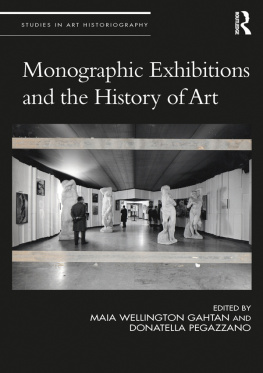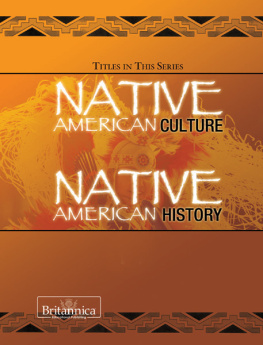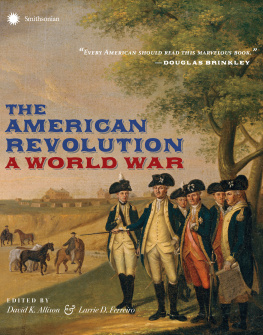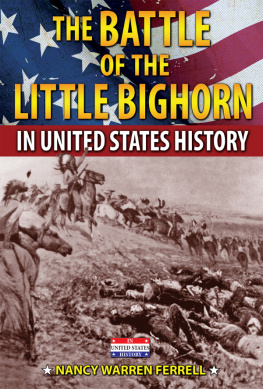First published 1998 by Garland Publishing, Inc.
This edition first published in 2021 by Routledge
605 Third Avenue, New York, NY 10017
and by Routledge
2 Park Square, Milton Park, Abingdon, Oxon OX14 4RN
Routledge is an imprint of the Taylor & Francis Group, an informa business
Copyright 1998 C. Richard King
All rights reserved. No part of this book may be reprinted or reproduced or utilised in any form or by any electronic, mechanical, or other means, now known or hereafter invented, including photocopying and recording, or in any information storage or retrieval system, without permission in writing from the publishers.
Notice:
Product or corporate names may be trademarks or registered trademarks, and are used only for identification and explanation without intent to infringe.
Publishers Note
The publisher has gone to great lengths to ensure the quality of this reprint but points out that some imperfections in the original copies may be apparent.
Disclaimer
The publisher has made every effort to trace copyright holders and welcomes correspondence from those they have been unable to contact.
Library of Congress Cataloging-in-Publication Data
King, C. Richard.
Colonial discourses, collective memories, and the exhibition
of Native American cultures and histories in the contemporary
United States / C. Richard King.
p. cm. (Native Americans)
Includes bibliographical references and index.
ISBN 0-8153-3163-0 (alk. paper)
1. Indians in popular cultureNorth America. 2. Indians of
North AmericaPublic opinion. 3. Museum exhibitsNorth
America. 4. Museum techniquesNorth America. 5. Public
opinionNorth America. I. Title. II. Series: Native Americans
(Garland Publishing, Inc.)
E98.P99K55 1998
973.0497dc21
989416
ISBN 13: 978-1-03-216530-1 (hbk)
ISBN 13: 978-1-03-216677-3 (pbk)
ISBN 13: 978-1-00-324911-5 (ebk)
DOI: 10.4324/9781003249115
Acknowledgments
This book would not have been possible without the support of countless individuals. A Summer Research Grant from the National Science Foundation and the Department of Anthropology at the University of Illinois combined with a University Fellowship awarded by the Graduate College at the University of Illinois funded the archival and ethnographic work at the heart of this project. At each of the sites discussed in this monograph, curators, librarians, and staff members, no less than tourists and local residents, contributed more than they will ever know to its interpretations. The efforts of Kitty Deer Nose at the Little Bighorn Battlefield National Monument and Tom Swearingen at the University of Kansas Museum of Natural History Museum were particularly noteworthy.
Throughout my graduate career at the University of Illinois Nancy Abelmann, Ed Bruner, Bill Kelleher, and David Prochaska nurtured my professional development, simultaneously challenging and enrichening me. Of equal importance have been the idle conversations and serious debates shared with peers in class and over coffee. And the support and encouragement of my parents and brothers has been irreplacable.
In addition, I would like to express my appreciation to Kristi Long, Rebecca Wipfler, and their support staff at Garland Publishing. Their enthusiasm and commitment, eased the myriad difficulties of publishing, enhancing the quality of this monograph.
Above all others, I want to thank my best friend and life partner, Marcie Gilliland for her endless support, constant challenges, and superb insights into the human condition. She, along with Abigail, kept me sane, centered, and focused throughout the completion of this project.
The author and publisher wish to thank the following for permission to reproduce copyrighted material:
A shorter version of appeared originally as Segregated Stories: The Colonial Contours of the Little Bighorn Battlefield National Monument and is reprinted from Dressing In Feathers: The Construction of the Indian in American Popular Culture edited by Elizabeth Bird with kind permission of Westview Press. 1996 Westview Press.
Surrounded by Indians is reprinted from The Public Historian 18(4) (Fall 1996):3751, with the kind permission of The University of California Press. 1996 The Regents of the University of California.
Colonial Discourses, Collective Memories, and the Exhibition of Native American Cultures and Histories in the Contemporary United States
CHAPTER 1
Of Tombs, Reservations, and Museums
Exhibiting Native America in the Contemporary United States
DOI: 10.4324/9781003249115-1
On 4 September 1911, Ishi, the fabled Yahi, left the Butte County Jail in Oroville, California, where he had been held for five days following his discovery outside a local slaughterhouse, and traveled with University of California anthropologist T.T. Waterman to a new space of confinement, the institutions Museum of Anthropology in San Francisco (T. Kroeber 1961:118120). Here, he lived and worked, as a museum specimen, informant, and janitor, for the next five years, until his death in 1916. Neither his exhibition nor his residence were unusual at the time. With increasing frequency throughout the latter half of the 19th century, precisely as American empire expanded to unparalleled limits, exhibitionary spaces, including worlds fairs, zoos, and entertainment spectacles, put Native Americans and other marginalized and colonized peoples on display (Bradford and Blume 1992; Braun 1975; Corbey 1993; Fogelson 1991; Hoxie 1979, Jacknis 1991; Letay 1987; Meyn 1992, 1994; Moses 1991; Rydell 1984). The University of California Museum of Anthropology commonly housed Native Americans, not as displayed objects, but as informants. On the ground floor there was even a small room, occupied frequently by Indians for a few days or a few weeks Indian guests were a normal part of museum living (T. Kroeber 1961:123). What made Ishi unique then was the duration of his stay and the anthropological work he performed in this context.







